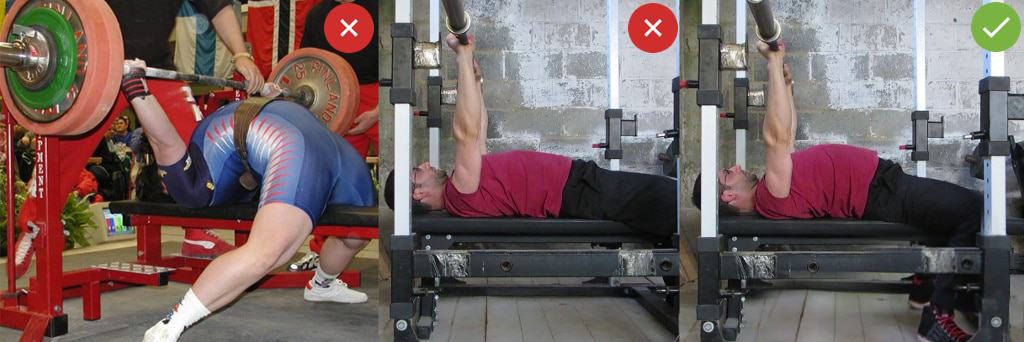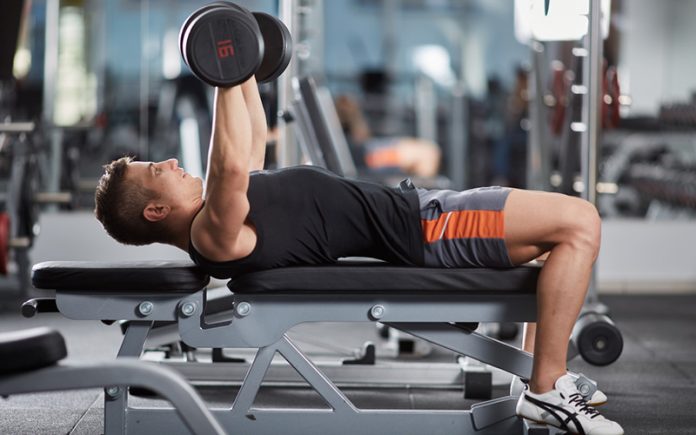The bench press is an widely loved upper body exercise. Fitness lovers from all over the world flock to the bench press exercise like metals are drawn to the magnet. Yet, so many fail to reap the benefits of this awesome exercise just because of their poor techniques, lack of proper knowledge or lack of proper weight benches.
In this article, I am going to cover some simple, easy-to-follow but effective tips and techniques on how to increase your bench press. Success at anything will eventually come into two factors – focus and efforts, and both of them are under our direct control. I hope these tips will help you to raise both your focus and effort regarding doing effective bench presses.
1. Pump Yourself Up
If you are an experienced weightlifter (weightlifting more than 6 months or 1 year) or hanging around some experienced weightlifters, you must have noticed how they pump themselves up mentally. Many of us think this is useless and a weird ritual, and this has no real useful connection with the weight lift. Well, it turns out that they work. Several research results showed that pumping up helped boost the performance of elite rugby players and weightlifters by 12% and 8% respectively.
Pumping up increase the focus and boost your mental energy for the upcoming challenge. By pumping up, you don’t have to stomp around like a mad man (That also works though if you are up for it). Picking up the right kind of workout songs and visualizing yourself bench pressing before actually doing the exercise is very easy, and an effective tactic that you can follow.
2. Warm Up Properly
It is pretty obvious that you need to do proper warm up exercises before doing any heavy lifting or intense workout. The general rule of thumb is that you need to use all of the muscles you intend to work on in the warm up process. Warm up is meant to increase your heart rate, make your muscles flexible for the upcoming intense workout session without making yourself burned out. Here is a good example of warm up exercises which are perfect for warming up your upper body muscles.
- Jog forward/backward 20 Yards (3 Reps)
- Bent Over Y’s (10 Reps)
- Shuffle 20 Yards (3 Reps)
- Skip forward/backward 20 Yards (3 Reps)
- Bent Over Robbers (10 Reps)
- Straight Arm Band Pull (10 Reps)
- Bent Over Windmills (5 Reps)
- Push Up Position Hold (15 Reps)
3. Take Safety Measures Seriously
It is a matter of impeccable importance to take proper safety measures before you do bench press. You may be an experienced weight lifter that doesn’t diminish your safety requirements. It just needs one or two bad movements to end up getting seriously injured. Many people around the world take help from a spotter while doing bench press. In my opinion, taking help from spotters is an ineffective solution. Spotters are humans and like us, they can also make mistakes.
Using a power rack is much more reliable and safe choice to get most of the benefits of bench press. They provide you the comfort of safety in case you fail. Don’t get me wrong. Having a professional spotter can provide many benefits. They can encourage you, accompany you in your tiring time. But they are not as essential as power rack and safety pins.
4. Set Your Bench Press Grip Right
Your bench press grip is a very important factor regarding the safety and the effectiveness of your bench press. It is one of the primary things to check and recheck if your are focusing on how to increase bench press strength. Try to learn the bulldog grip. It is the safest and effective grip for bench pressing.

Don’t use a thumb less grip as depicted on the left side of the picture. With this grip, the bar can slip off anytime. Secure your grip by using your thumb. That way the bar won’t fall off your hands. However, don’t use a strong grip. Thus, your wrist will bend it will hurt in the long run. Practice the bulldog grip as depicted on the right side of the picture. It may feel insecure and awkward initially if you are not used to it. Try it for a few workouts and you will get used to it.
5. Correct Wrist & Forearm Position
Your wrist and forearm position controls the movement of the bar and the impact it has on your upper body. A wrong grip can cause pain or injuries. Furthermore, it won’t deliver the results you want to gain from your bench press.

Your wrists, elbows, and forearms should be in a vertical line while you bench press. That way your bench press will have the maximum effect on your upper body. Your forearm must be vertical when the bar touches your chest. It should remain vertical all the way to up and down.
6. Don’t Flare Your Elbows Too Much

The position of your elbow matters a lot in determining the effectiveness of your bench press. You should learn the perfect elbow position if you want to improve your bench press.
Your elbows should not be perpendicular to your torso. That way, you will impinge your chest. On the other hand, you also can’t tuck your elbows too much. Thus, it will make the weight way heavier to lift. Your elbows should be around 75° angled with your body. Tuck your elbows toward your torso slightly as you lower the bar and tuck away a little bit as you lift the bar.
7. Upper Back Position
Your upper back position is crucial to do proper bench press since bench press do most of the work in your upper body muscles. Merely your wrist and forearm position is not enough to get the best out of bench pressing.

You should squeeze your shoulder-blades while bench pressing. That will stretch your upper back and enhance your stability. Don’t squeeze too hard though. Just imagine you are holding a pen gently with your shoulder blades as depicted in the picture above.
8. Lower Back Position
Don’t do bench press with a flat lower back. You should arch your lower back slightly up. That will help your upper back stretch. Don’t over arch your lower back though. Arch to that extent to which you can slide your hands between the weight bench and your lower back as depicted in the right side of the picture.

If you bench press with a flat back, it will decrease the range of your motion, ultimately reducing the effectiveness of your bench press. Another thing to remember in this regard is the position of your butt. Don’t raise your butt while you arch your lower back. Your butt should stick to the bench while you slightly arch your lower back.
9. Place Your Whole Feet on The Ground
Another rookie mistake most beginners make when bench pressing is when they position their feet. If you position your feet on the air or on the bench, it won’t help. Position your feet rightly under your butt. Keep them connected with the floor. Thus, your stability will increase and you can generate more power. Don’t raise your heels while you lift the weight. It is very tempting and sometimes it happens spontaneously. But you have to practice to keep the whole feet on the floor to increase bench press fast.
10. Don’t Do Bench Press Slow or Fast, Do It Naturally
There is no defined speed which you have to maintain to do proper bench press form. Don’t do it too fast and don’t do it too slow. Benching too fast will increase the chance of injury and doing it too slowly will drain your energy. Do it at your normal speed. Research shows that bench pressing too slow actually reduce the overall performance of the subjects.
11. Breath Properly
In my experience, the importance of breathing is one of the most underrated issues in regard to bench pressing. Breathing properly can multiply the effectiveness of your bench pressing manifolds. You should inhale while you hold the bar and lower it down from its starting position to your chest. Then exhale while lifting the bar to its starting position. Don’t forget to hold your breath in the middle for a second. It will increase the stability of your chest. If you’re engaged in cardio, you can improve your stamina as well as breathing technique.
12. Videotape Yourself
Don’t forget to videotape yourself. It will provide you a better understanding of your weakness. Share it with an expert. Thus you can improve bench press continuously. This is the ultimate solution if you are wondering how to get stronger at bench press step by step.
Increasing your bench press capability and effectiveness is a slow process. The speed of progression will be slower than squat or deadlift. However, following the proper techniques is crucial to keep the improvement rate upward.










































